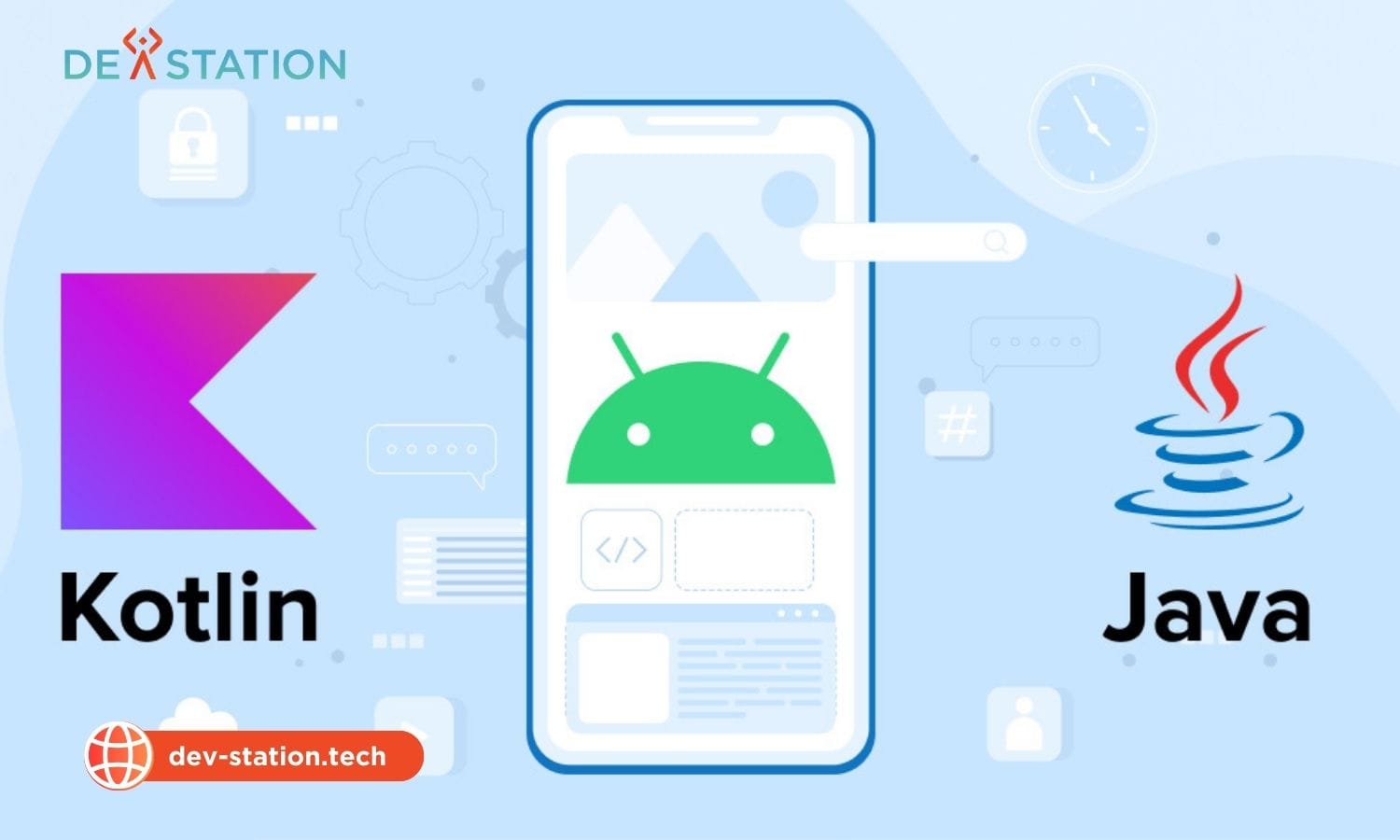Embedded products succeed when they are fast, safe, and easy to update. This guide helps teams build real-time systems and focus on reliability. It offers a straightforward plan for planning, design, and delivery.
Dev Station Technology uses embedded systems engineering in many fields. These include industrial automation, automotive, medical devices, and consumer electronics. They follow standards like MISRA C/C++, CERT C, ISO 26262, and IEC 62304. This ensures their firmware meets business goals, like quick market entry and cost savings.
This series covers what to check, how to design, test, and improve. It shows how to optimize firmware for better performance and power use. Each part gives you a plan to make smart choices and meet deadlines.
You’ll get detailed advice on architecture, coding, safety, and testing. The goal is a reliable approach to embedded software design. It works for small prototypes and large fleets in the field.
Contents
ToggleKey Takeaways
- A concise embedded development guide that links architecture, code, and process to business results.
- Actionable steps for firmware architecture that serve real-time systems and embedded reliability goals.
- Standards-driven methods using MISRA, CERT C, and safety frameworks to reduce risk.
- Embedded firmware optimization focused on performance, power, and maintainability.
- Toolchain-agnostic practices proven by Dev Station Technology across Arm, GCC, Clang, IAR, Renesas, and NXP.
- Clear checkpoints for testing, profiling, and release quality in embedded systems engineering.
Understanding Embedded System Constraints and Architecture Choices
Every product starts with clear embedded architecture decisions. Teams balance real-time determinism, latency budgets, and MCU vs MPU selection while honoring power and thermal constraints. The right path shapes cost, schedule, and long-term support across industrial, medical, and automotive lines.
Defining real-time requirements, latency, and determinism
First, classify deadlines. Hard real time means a missed deadline is a failure, as in motor control or braking. Firm real time loses value after the deadline. Soft real time, like audio streaming, aims for best effort.
Map the critical path: sensor capture to ISR to task to actuator or network. Set end-to-end latency budgets and jitter limits, then verify with worst-case execution time analysis. Choose scheduling that supports real-time determinism: fixed-priority preemptive, Earliest Deadline First, or time-triggered for safety profiles.
Selecting the right MCU/MPU, memory, and peripherals for workload
For MCU vs MPU selection, match compute and I/O to the workload. MCUs such as Arm Cortex-M4 or M7 and RISC-V cores offer low latency and tight control with DSP/FPU, TrustZone-M, and ECC RAM options. MPUs like Arm Cortex-A add MMU, external DRAM, and Linux readiness for rich UI and high-speed I/O.
Plan memory for peak use plus headroom. Use XIP QSPI or OSPI NOR for code, eMMC or NAND for data, and prefer ECC for safety. Align buffers for DMA and exploit caches, TCM, or scratchpads. Validate peripheral fit: ADC resolution and sample rate for control loops, PWM timers for drives, and CAN FD or Ethernet TSN when networking determinism matters.
Trade-offs between RTOS, bare metal, and Linux-based systems
RTOS vs bare metal vs Linux is a core call. Bare metal yields minimal latency and a tiny footprint but adds manual scheduling and rising complexity. RTOS options like FreeRTOS, Zephyr, or Azure RTOS bring tasks, timers, IPC, and predictable priority behavior with slight overhead.
Embedded Linux via Yocto or Buildroot offers rich services, security frameworks, and containers. It needs an MMU, more memory, and tuning for determinism, such as PREEMPT_RT. Drivers include boot time, connectivity, update strategy, and lifecycle commitments.
Power, thermal, and footprint considerations in system design
Set a power model covering active, idle, and sleep. Profile peaks during RF transmit or motor spin-up, then apply DVFS, clock gating, and deep sleep modes. Thermal work estimates power density, heat sink needs, and throttling behavior, validated by on-die sensors near the CPU and PMIC.
Footprint optimization affects BOM and EMI. Balance PCB layer count with signal integrity, and keep test points and SWD/JTAG access. Compliance targets like FCC, CE, ISO 26262, and UL steer isolation, diagnostics, and safety mechanisms from day one.
| Decision Area | Primary Drivers | Pros | Cons | Typical Fit |
|---|---|---|---|---|
| Hard vs Soft Real Time | real-time determinism, latency budgets, jitter tolerance | Predictable behavior, safety alignment | Stricter design limits and testing load | Drives, braking, robotics control loops |
| MCU vs MPU selection | Compute needs, memory, I/O, OS choice | Right-size cost and power for workload | Wrong pick increases redesign risk | MCU for control; MPU for UX and networking |
| RTOS vs bare metal vs Linux | Boot time, determinism, security, updates | Tailored stack for features and schedules | Integration effort and footprint trade-offs | Low-power nodes, gateways, edge AI |
| Power and thermal constraints | DVFS, clock gating, heat spreading | Longer battery life and stable performance | Thermal budget can cap CPU frequency | Wearables, industrial sensors, routers |
| Footprint optimization | PCB layers, EMI, test access | Lower BOM and reliable manufacturing | Space limits complicate routing | Compact consumer and automotive modules |
embedded software design best practices
Dev Station Technology uses a clear, layered approach to ensure teams deliver reliable code on time. They focus on modular firmware design, strict interface contracts, and choices that work well under stress. Each strategy helps in delivering consistent behavior while managing costs and risks.
Modular architecture, layering, and clear interfaces
A layered stack includes hardware abstraction, OS services, middleware, and app logic. This keeps changes local and testable. Drivers hide registers, and higher layers see stable APIs and ABI versioning.
Define interface contracts in headers and mock them for unit tests. Use dependency inversion to keep hardware quirks hidden. This results in small, readable modules that work across teams and product lines.
Defensive coding standards with MISRA, CERT C, and static analysis
Follow MISRA C and CERT C to avoid undefined behavior and data races. Treat warnings as errors and use sanitizers during hosted tests. Static analysis tools like CodeSonar and clang-tidy run in CI with a clear deviation process and peer review.
This discipline reduces defect density early and keeps interfaces stable as features evolve. Teams gain confidence to refactor without fear.
State machines, task prioritization, and interrupt management
Use state machines in embedded systems to express protocol and control logic. Use explicit FSMs or hierarchical models. Generated code from tools like Quantum Leaps preserves intent and traceability.
Set priorities using rate-monotonic analysis. Keep ISRs brief to cut interrupt latency. Use debouncing and protect against priority inversion with priority inheritance or ceiling protocols.
Memory safety, zero-copy patterns, and bounded resource usage
Prefer static allocation and bounded memory pools for predictability. Avoid recursion in time-critical paths and never allocate in an ISR. Use ring buffers and region allocators to keep ownership clear and lifetimes simple.
Adopt zero-copy DMA and scatter-gather where supported. Align buffers for cache and coherency. Track CPU, heap, and stack quotas per task with watermarks and guards. Enable MPU or Arm TrustZone to isolate faults.
Time-budgeting and performance profiling in target hardware
Assign a budget and deadline to each task, then verify with watchdogs and trace timers. Use ITM/SWO, ETM, Arm CoreSight, or Linux perf for performance profiling on target.
Exercise worst-case paths under load: highest ISR rates, bus contention, and cache pressure. Keep regression tests that fail when timing drifts, ensuring fixes land before they become outages.
Robustness, Reliability, and Safety for Production-Grade Firmware
Dev Station Technology creates firmware that works well under pressure. It starts with clear safety goals and a practical path to functional safety. Teams map hazards to standards early, following ISO 26262 for cars and IEC 62304 for medical devices. They aim for consistent fault tolerance without slowing down.
Effective fault detection uses layers. Watchdogs, including windowed and independent types, catch stalls and timing drift. Brown-out detection guards against power edges. Heartbeat supervision across critical tasks gives a live view of execution. CRC checks protect memory and links, while runtime diagnostics expose error codes you can act on.
Critical inputs need redundancy. Dual sensors with plausibility checks cut silent failures and enable graceful degradation when a part misbehaves. Enforced safe states—outputs disabled, torque off, clear user alerts—preserve people and assets while logs capture the trail for post-mortem review.
Engineering choices rely on evidence. Teams run failure modes and effects analysis and extend it with FMEDA to quantify rates. Components with published FIT data and ECC-enabled memories reduce latent risks. Where required, lockstep MCUs such as Texas Instruments Hercules or Infineon AURIX support higher ASIL targets with tight error detection.
Security underpins reliability. A secure boot chain anchored in hardware verifies signed code before execution. Arm TrustZone, NXP EdgeLock, and Microchip ATECC608 help isolate keys and enforce least privilege. OTA updates use authenticated packages, anti-rollback, and encrypted storage to keep fleets consistent and safe to patch.
Interfaces must resist misuse. Stack canaries, control-flow integrity where available, and MPU/MMU guards limit blast radius. Partitioning keeps drivers and apps in their lanes. Secrets stay in secure elements or PUF-derived vaults, reducing exposure during maintenance and remote diagnostics.
Observability keeps firmware honest in the field. Structured logging with severity levels and rate limits avoids log storms. Persistent records track uptime, reset reasons, and health metrics. Telemetry pipelines send crash dumps and periodic reports over TLS while respecting bandwidth and power budgets.
Resilient delivery closes the loop. A/B partitions and atomic swaps make OTA updates predictable. Power-fail resilience and rollback protect devices at the worst moment. Concepts from The Update Framework guide signing roles and key rotation so large fleets stay trustworthy over time.

| Objective | Mechanism | Industry Example | Benefit |
|---|---|---|---|
| Functional safety | ISO 26262 and IEC 62304 alignment, FMEA/FMEDA, ECC memory | Infineon AURIX lockstep MCU in drive control | Quantified risk, higher diagnostic coverage |
| Fault tolerance | Windowed and independent watchdogs, heartbeat supervision | Texas Instruments Hercules safety monitor | Fast detection of stalls and timing faults |
| Signal integrity | Redundancy with dual sensors, plausibility checks, CRC | Bosch pressure sensors in redundant sensing chains | Graceful degradation and fewer silent failures |
| Secure startup | Secure boot with RSA/ECDSA, hardware root of trust | Arm TrustZone with Microchip ATECC608 key storage | Prevents unauthorized code execution |
| Fleet updates | OTA updates with A/B partitions, anti-rollback, TUF concepts | NXP EdgeLock-enabled gateways | Atomic, recoverable field upgrades |
| Runtime hardening | MPU/MMU isolation, stack canaries, least-privilege design | ARMv8-M memory protection in sensor hubs | Containment of faults and exploits |
| Diagnostics and telemetry | Structured logs, event counters, crash dumps via TLS | Remote service dashboards for industrial PLCs | Faster root cause and reduced downtime |
Performance Optimization Techniques for Real-Time and Low-Power Systems
Dev Station Technology focuses on making systems run smoothly and use less energy. They start with facts, not guesses. They use measurement, code skills, and knowledge of silicon to improve performance.

Measuring before optimizing: profiling, tracing, and benchmarking
First, create scenarios that match real-world use. Use tools like Arm DWT CYCCNT and ETM tracing to find performance bottlenecks. Also, use Linux perf to measure how fast systems run.
Make a baseline of how fast ISRs run, how well tasks are scheduled, and how much power is used. This helps in understanding where to improve.
Run microbenchmarks in CI to catch problems quickly. Keep tests short and repeat them to see if changes improve performance.
Optimizing ISR paths, DMA usage, and concurrency control
Optimize ISRs by doing the least necessary. Acknowledge early, avoid loops, and use queues to pass tasks. This makes systems run faster.
Use DMA to move data quickly. Double buffers and ping-pong schemes can help. Adjust burst sizes and priorities on shared buses for better performance.
Algorithmic efficiency vs. compiler optimizations and link-time opts
Start with the algorithm. Change slow routines to faster ones. Use fixed-point math and lookup tables when possible. This improves performance without side effects.
Then, enable -O2 or -O3 for better code. Use link-time optimization with -flto. Add profile-guided tuning where possible. For DSP, use CMSIS-DSP or NEON/SIMD intrinsics. Validate with unit tests and golden vectors.
Low-power design: sleep states, clock gating, and DVFS strategies
Batch work and let the MCU sleep more. Use tickless RTOS modes and coalesce wakeups. Gate clocks on idle peripherals.
Apply DVFS to drop voltage and frequency when possible. Scale back up for bursts. Measure with Keysight analyzers or the Nordic Power Profiler Kit.
Memory layout tuning: cache locality, alignment, and MPU settings
Place hot code and ISR vectors in ITCM/DTCM for less latency. Improve cache optimization by aligning buffers and using non-cacheable regions for DMA.
Use structures of arrays over arrays of structures for better locality. Guide placement with linker scripts and dead-strip unused sections. Set MPU or MMU regions to execute-never for data and read-only for code. This reduces misses and supports deterministic timing.
Quality Assurance: Testing, Toolchains, and Continuous Integration
Dev Station Technology uses a V-model test strategy. It connects requirements to clear outcomes. This approach guides unit and integration tests from the start.
Behavior-driven scenarios make edge cases clear. They help engineers and stakeholders understand the same goals.
Early tests run on host systems with GoogleTest or Unity/CMock. They use driver mocks. Later, tests move to dev kits and custom boards.
Closed-loop validation uses hardware-in-the-loop testing. It also uses processor-in-the-loop with repeatable signals. This method ensures fast regression testing and high confidence before field trials.
An embedded CI/CD pipeline runs on GitHub Actions, GitLab CI, or Jenkins. It tests across compilers like GCC, Clang, IAR, and Arm Compiler. Build matrices test different optimization levels and targets.
Yocto manifests and Zephyr’s West keep dependencies stable. This ensures toolchain reproducibility via pinned versions and Docker containers.
Quality gates combine static and dynamic analysis with strict code coverage targets. MISRA reports must pass. Sanitizers run on host binaries.
Protocol parsers face fuzzing with AFL++ or libFuzzer. Coverage is recorded with gcov and lcov. MC/DC is measured when safety cases require it.
On-target verification uses SEGGER J-Link, OpenOCD, or pyOCD. It flashes, traces, and collects timing. Firmware is instrumented for code coverage and runtime metrics.
Golden datasets keep regression testing stable across versions. Environmental checks include thermal cycling, vibration, and EMI/EMC pre-scan. Long soak runs with automated fault injection are also done.
Releases ship with versioned artifacts, SBOMs in CycloneDX or SPDX, and signed binaries. Changelogs document risks and mitigations. Telemetry informs new unit and integration tests.
Canary rollouts and staged OTA updates strengthen test automation. They close the loop within an evolving embedded CI/CD practice.
Conclusion
Creating production-grade embedded systems needs a clear plan. A solid roadmap links architecture, coding, safety, performance, and quality checks. This ensures a smooth flow from start to finish.
Teams should define real-time needs early. They should choose the right hardware and design in layers. This reduces complexity and speeds up development.
Reliability comes from safety engineering. Features like watchdogs and secure updates protect devices. Observability keeps fleets running smoothly.
Optimization is key, not guessing. Start with profiling, then refine critical areas. Balance power-saving with performance to keep devices responsive.
Quality comes from routine automation. Tools like continuous integration and hardware checks ensure reliability. This approach works for all types of systems.
Dev Station Technology helps at every step. They offer architecture reviews, tool setup, and safety-compliant development. Their services are perfect for U.S. and global projects.
For predictable delivery, embedded consulting is essential. It provides a clear path from idea to production. This approach is practical and scalable for your next project.





